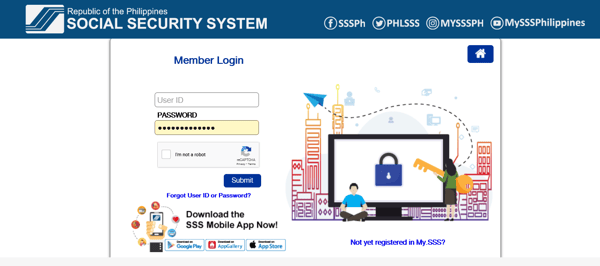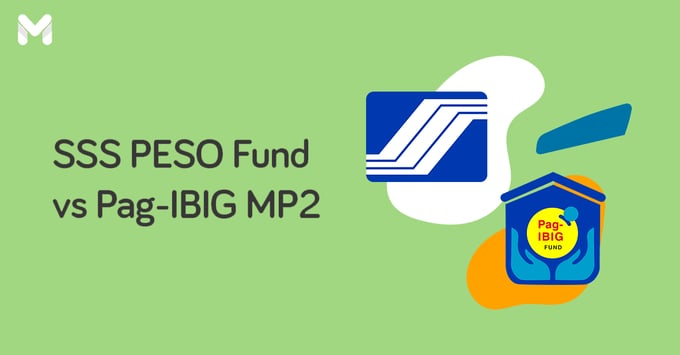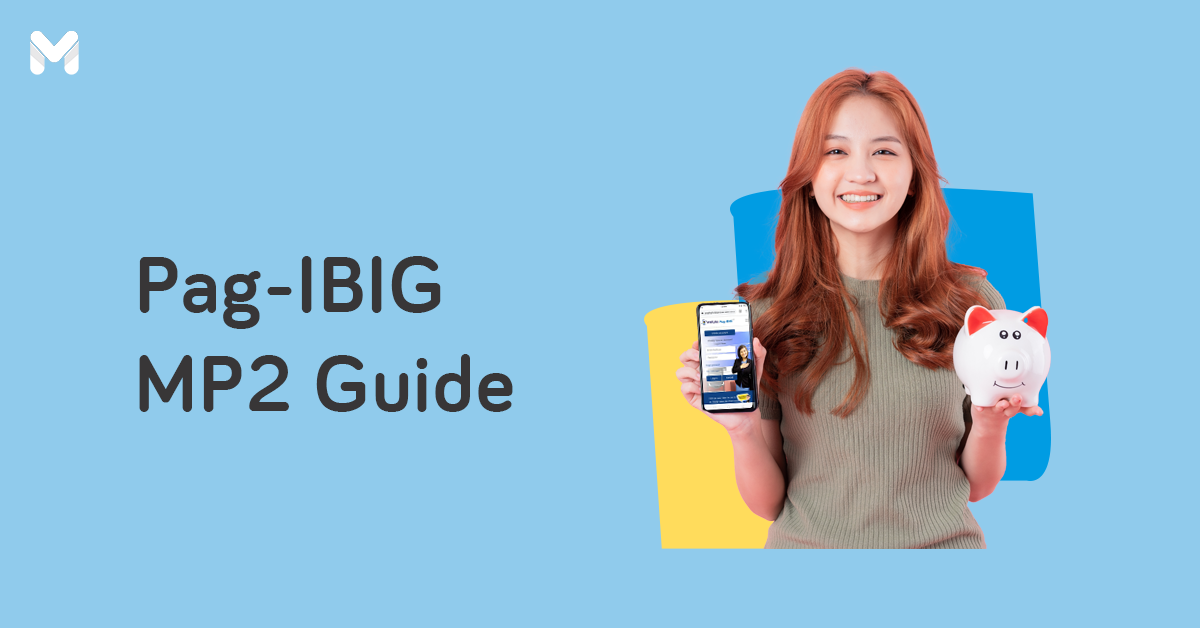If there’s one thing the pandemic and the latest rise in inflation taught us, it’s to save for emergencies. And yes, a bank account is not the only way to set aside an emergency or savings fund. You can also start saving with the SSS PESO Fund and Pag-IBIG MP2.
To encourage its members to save and earn additional income, the SSS and Pag-IBIG Fund implement their respective voluntary savings schemes: the SSS Personal Equity and Savings Option (PESO) Fund and the Modified Pag-IBIG II (MP2) Program.
Both government savings programs are attractive options for Filipinos who don’t have a lot of extra money and would prefer to not invest it in riskier instruments such as stocks and mutual funds.
In this article, we’ll talk about the SSS PESO Fund vs MP2 to help you pick the better savings program for you.
What is the SSS PESO Fund?
The SSS PESO Fund[1] is a provident fund program offered to SSS members who want to voluntarily contribute and save more.
In this SSS investment program, contributions are allocated to three accounts:
- Retirement/Disability - 65% allocation with guaranteed earnings based on five-year T-Bond Rates
- Medical - 25% allocation with guaranteed earnings based on 364-day T-Bill rates
- General purposes - Composed of education, housing, livelihood, and unemployment with a 10% allocation of earnings based on 364-day T-Bill rates
Eventually, PESO Fund accounts will be transitioned to the SSS' new retirement savings program, WISP (Worker’s Investment and Savings Program) Plus. Until then, you can continue earning through the PESO Fund.[2]
What is MP2 Savings?
The Pag-IBIG MP2 is a savings facility designed for Pag-IBIG Fund members. This savings program is also open to retirees and pensioners who used to be active Pag-IBIG Fund members.
Common Features of MP2 and SSS PESO Fund

Before we flesh out the differences between the two government savings schemes, let’s take a look at the features that have in common:
👉 Open to All Regular Pag-IBIG and SSS members
Whether you’re an OFW or local worker, living abroad or anywhere in the Philippines, you can open a SSS PESO Fund and/or Pag-IBIG MP2. Just make sure you meet all the requirements.
👉 Optional Savings Programs
These are voluntary savings schemes, meaning members are not required to join if they don't want to. Those who want to save in SSS PESO Fund or Pag-IBIG MP2 can make payment contributions every month or pay a lump sum. Both programs also allow you to save more if you want to earn more.
👉 Tax-Free
Interest earned from savings accounts under the SSS PESO Fund Program and Pag-IBIG MP2 Program will not be subject to tax. In contrast, most regular peso savings accounts with commercial banks are subject to a 20% withholding tax.
👉 Guaranteed by the Philippine Government
There’s little to no possibility of losing your savings because these contributions are backed by government funds.
👉 Higher Interest Rates
Compared to savings and time deposit accounts, government savings programs from the SSS and Pag-IBIG have higher interest rates. This means you can earn twice your earnings in a year compared to other regular savings accounts.
👉 Monthly Payments Not Required
There’s no penalty for missed monthly payments. You don't need to worry about missing a payment because earnings for your account are calculated on an annual basis.
SSS PESO Fund vs MP2: Minimum and Maximum Investments

The SSS PESO Fund and Pag-IBIG MP2 are among the most affordable savings options in the Philippines. This makes the two savings programs ideal for millennials, non-working spouses, kasambahays, and other Filipinos who don’t have much money to spare for saving and investing.
For as low as ₱500 monthly, you can start saving under the MP2.
The minimum monthly investment for the PESO Fund is higher yet still affordable at ₱1,000.
With the MP2, you can save as much as you can, as it has no maximum savings amount. SSS, however, allows members to save ₱100,000 at most per year with the PESO Fund.
Back to the main article: Investments for Beginners: How to Find the Right Investment for You
SSS PESO Fund vs MP2: Interest Rates
Investments tend to grow faster with the Pag-IBIG MP2 than with the SSS PESO Fund.
The MP2 dividend rate for 2022 is 7.03%, the highest since the pandemic.[3] Meanwhile, earnings with the PESO Fund grow by 1.85% to 3.75% per year based on Treasury Bond and T-Bill rates.
The SSS voluntary savings program may have lower interest rates than those of the Pag-IBIG Fund, but they’re still higher than time deposit rates of 1.13% to 3.20%. This means you can earn faster if you put your money in these government savings programs than in bank accounts.
SSS PESO Fund vs MP2: Maturity Period
How do these two savings programs fare when it comes to withdrawal and maturity periods? Here's what you need to know.
📌 SSS PESO Fund Withdrawal
After five years of saving under the PESO Fund, you can claim only up to 35% of your savings from medical and general-purpose accounts. The rest of the fund (65%) can be withdrawn only when you reach the age of 60 or when you file for retirement or total disability with the SSS.
If you withdraw before the five-year retention period, the SSS will charge penalties and service fees.
📌 MP2 Savings Withdrawal
The savings and dividends can be claimed after five years. However, the Pag-IBIG Fund allows early withdrawal for cases of total disability, insanity, or unemployment due to health reasons. When a member dies before the five-year maturity period, his or her beneficiaries can claim the savings.
After claiming your funds, you can opt to register for a new MP2 account, reinvest the amount fully or partially as a lump-sum payment, and keep saving for another five-year term.

SSS PESO Fund vs MP2: Enrollment
Perhaps the biggest differences between SSS PESO Fund and Pag-IBIG MP2 are their respective eligibility requirements and enrollment procedures.
📌 SSS PESO Fund Enrollment

SSS PESO Fund Requirements
The SSS has quite a few requirements for members who wish to enroll in the PESO Fund. Only SSS members (including employees, self-employed professionals, voluntary members, and OFWs) who meet these conditions can open an account:
- 55 years old and below
- Paid at least six consecutive monthly SSS contributions (under the regular SSS program) within the last 12 months prior to enrollment
- For self-employed, voluntary, and OFW members: payment of maximum contributions under the regular SSS program
- No final claim was filed under the regular SSS program (retirement, total disability, or death benefits)
SSS PESO Fund Enrollment Procedure
SSS members can enroll in the PESO Fund at any SSS branch in the Philippines. Simply complete the SSS PESO Fund Enrollment Form and submit it at the nearest SSS office.
If you want to avoid the long lines at an SSS branch, you can apply online via the My.SSS portal. To start your SSS PESO Fund online registration, you need to create a My.SSS account first. Check this guide for instructions on how to register for an SSS online account.
Once you’ve set up your My.SSS account, log in with your user ID and password. On the homepage, hover your mouse over the e-Services tab and then click PESO Fund.
After successful enrollment, you’ll receive an email confirmation. You can then begin paying your contribution to the SSS PESO Fund.

However, SSS requires members who enrolled in the PESO Fund to personally appear at any SSS branch and confirm their enrollment. If you fail to do so, you won’t be allowed to withdraw your savings or apply for any SSS benefit.
📌 MP2 Enrollment
MP2 Requirements
All Pag-IBIG members, including OFWs, can enroll under the enhanced MP2 program regardless of age and monthly income. As mentioned, the improved savings scheme even extends to retirees or pensioners, as long as they are former Pag-IBIG members with at least 24 monthly Pag-IBIG contributions before their retirement.
MP2 Enrollment Procedure
The traditional way to open an MP2 account is to transact at any Pag-IBIG branch nationwide. Members are required to fill out the Modified Pag-IBIG MP2 Enrollment Form and submit the completed form to the officer, who will process the application and provide an MP2 account number. The applicant may opt to pay their first Pag-IBIG MP2 contribution right after account opening at the Pag-IBIG office.
The Pag-IBIG Fund also accepts online applications for its voluntary savings program through the MP2 Enrollment System.[4]
Using the Pag-IBIG MP2 online registration facility, enter the required details for the application form, including Pag-IBIG number, name, birthdate, desired monthly contribution, preferred dividend payout (annually or at the end of the five-year maturity period), and mode of payment.

After submitting the online form, the completed Pag-IBIG MP2 enrollment form will appear, which indicates the member’s MP2 account number.
After generating your account number, you can proceed to paying your contribution each month or in a lump sum. Once the payment is posted, the account automatically gets activated.
SSS PESO Fund vs MP2 Payment Modes
💸 SSS PESO Fund Mode of Payment
SSS members enrolled in the PESO Fund program may remit their savings through any SSS tellering branch nationwide. Aside from the cash or check payment, a completed SSS PESO Fund Payment Form must be submitted to the teller.
Those who prefer to remit somewhere else can do so through any of the following channels that accept SSS PESO Fund payments:
- GCash
- Bills payment centers: Bayad Center, SM Business Centers, SM Hypermarket, Savemore, and ECPay outlets
- Partner banks: AUB, Bank of Commerce, PNB Savings Bank, Rural Bank of Lanuza, UnionBank, and Wealth Bank
💸 MP2 Mode of Payment
Members who enroll in the MP2 program have three options for remitting their savings: salary deduction, over-the-counter payment at a Pag-IBIG branch, and payment at any accredited Pag-IBIG collecting partner.
The best Pag-IBIG MP2 mode of payment for employees is through salary deduction. If you choose this payment mode, your monthly MP2 contribution automatically gets deducted from your payroll and remitted by your employer to the Pag-IBIG Fund. No need to worry about skipping any monthly payment.
For self-employed and OFW members, transacting with accredited collection partners is the most convenient Pag-IBIG MP2 mode of payment.
Here are the different payment channels for MP2 contributions:
- Credit or debit card payment via the Pag-IBIG MP2 Online Payment Facility[5]
- Bills payment centers: Bayad Center, SM Business Centers, SM Hypermarket, Savemore, M Lhuillier, and ECPay outlets (including 7-Eleven stores)
- Mobile wallets: GCash app, PayMaya, and Coins.ph app
- Moneygment mobile app
- Overseas remittance partners: PNB, AUB, CashPinas, iRemit, and Ventaja
SSS PESO Fund vs MP2: Which is Better?
So which of the two government savings programs suits you better? Here’s a table to help you easily visualize the differences between the SSS PESO Fund and Pag-IBIG MP2.
| Criteria | Pag-IBIG MP2 | SSS PESO Fund |
|---|---|---|
| Age limit | None | 55 years old |
| Other eligibility requirements | For retirees: At least 24 monthly contributions before retirement |
|
| Minimum investment | ₱500 | ₱1,000 |
| Maximum investment | No limit | ₱100,000 per year |
| Interest rate | 7.03 (as of 2022) | 1.85% to 3.75% per year |
| Number of accounts for enrollment | No limit | One account only |
| Maturity period | Five years |
|
| Enrollment procedure | Both in-branch and online (but the online application requires the member's personal appearance at the branch) | Both in-branch and online (but the online application requires the member's personal appearance at the branch) |
| Payment modes | Salary deduction/over-the-counter transaction in-branch/accredited collecting partners | Over-the-counter transaction in-branch and accredited collecting partners |
As you can see, the Pag-IBIG MP2 program is more affordable and flexible than the SSS PESO Fund. With Pag-IBIG MP2, you can grow money as much as you want. Plus, it's easier to start saving with MP2 because it doesn’t have a lot of conditions for enrollment.
Pag-IBIG MP2 also offers more flexibility in terms of payment channels. Members enrolled in the MP2 program can choose from a wide variety of payment facilities, including convenient ones like credit cards and mobile wallets.
It, therefore, comes as no surprise that savings from Pag-IBIG members keep increasing[6] every year.
The SSS PESO has its own merits, though. It’s an ideal way to increase your retirement fund, as you can access your funds only when you retire. The PESO Fund is also better as a long-term investment, while the MP2 is designed for short-term and medium-term investing.
Both government savings schemes allow their respective members to easily start saving for retirement or any financial goal through online registration. However, enrolled members still have to visit a Pag-IBIG or SSS branch to personally confirm their enrollment.
SSS PESO Fund vs MP2: How to Choose the Right Savings Program
Should you choose the Pag-IBIG MP2 or SSS PESO Fund? Your choice will depend on your goal and current situation. Take some time to assess your capacity to maintain these accounts and see which one really suits your needs.
Evaluate your current situation. Can you afford the monthly contribution? Do you have a stable source of income to pay your contributions? Can you set aside the savings amount for an extended period?
Once you've made an objective evaluation of your financial situation, it’s time to check your goals. Why do you want to save money through SSS and Pag-IBIG? Do you want to prepare for your retirement? Are you aiming to receive annual dividends?
Your purpose and current situation can help you make the right choice between these two provident funds programs.
| Goal/Current Condition | Ideal Savings Program |
|---|---|
| I don't want to withdraw my savings immediately. | SSS PESO Fund |
| I want to have multiple savings accounts. | Pag-IBIG MP2 |
| I want to secure my retirement. | SSS PESO Fund |
| I can't save more than ₱500 each month. | Pag-IBIG MP2 |
| I want to pay my contributions for five years in a lump sum. | Pag-IBIG MP2 |
| I want to receive my earnings or dividends annually. | Pag-IBIG MP2 |
| I need funds to secure my health. | SSS PESO Fund |
| I want to receive my earnings only after I stop working. | SSS PESO Fund |
| I want a savings account that has a fixed interest rate. | SSS PESO Fund |
Final Thoughts
Considering all their pros and cons, the SSS PESO Fund and MP2 suit different needs.
The MP2 is the better savings option for self-employed and voluntary members, as well as low-income earners with a limited budget who can’t afford to pay the full maximum monthly SSS contributions. It’s a great way to save up for a big purchase, like a travel fund.
On the other hand, the SSS PESO Fund is more suitable for employees, as their employers shoulder a bigger portion of their monthly SSS contributions. If you’re earning a higher income, it can also help you save for retirement.
Whichever savings program you choose, you’re on the right track with your journey to financial freedom.

Sources:
- [1] SSS PESO Fund
- [2] 2023 uSSSap Tayo Episode 01 - Ano ang WISP Plus? (MySSSPH YouTube channel)
- [3] PBBM lauds highest Pag-IBIG dividend rates since pandemic: 6.53% for regular savings, 7.03% for MP2 (CNN Philippines, 2023)
- [4] MP2 Savings Enrollment
- [5] MP2 Online Payment Facility
- [6] Members save record-high P27.51B in Jan-Apr 2023 in Pag-IBIG, up 10%; MP2 Savings reach P13.89B, up 14% (Philstar, 2023)
DISCLAIMER: The opinions expressed by the writer are theirs alone, and do not reflect the opinions of Moneymax and/or its affiliates or any employee thereof. Neither Moneymax or its affiliates are responsible for the accuracy of any of the information supplied by the guest writer. The opinions expressed in this blog are for general informational purposes only and are intended to provide education about the financial industry.
Nothing in this blog constitutes investment or financial advice or any recommendation that any security, portfolio of securities, investment product, transaction or investment strategy is suitable for any specific person. This material does not take into account your personal circumstances, finances, goals and/or objectives; all of which are unique to you. Readers must make an independent decision regarding investments or strategies mentioned on this blog or elsewhere on www.moneymax.ph. We strongly recommend you consider seeking advice from your own financial or investment adviser before taking any action. We do not make any representation or warranty as to the accuracy, completeness or correctness of the information set out in this article.









